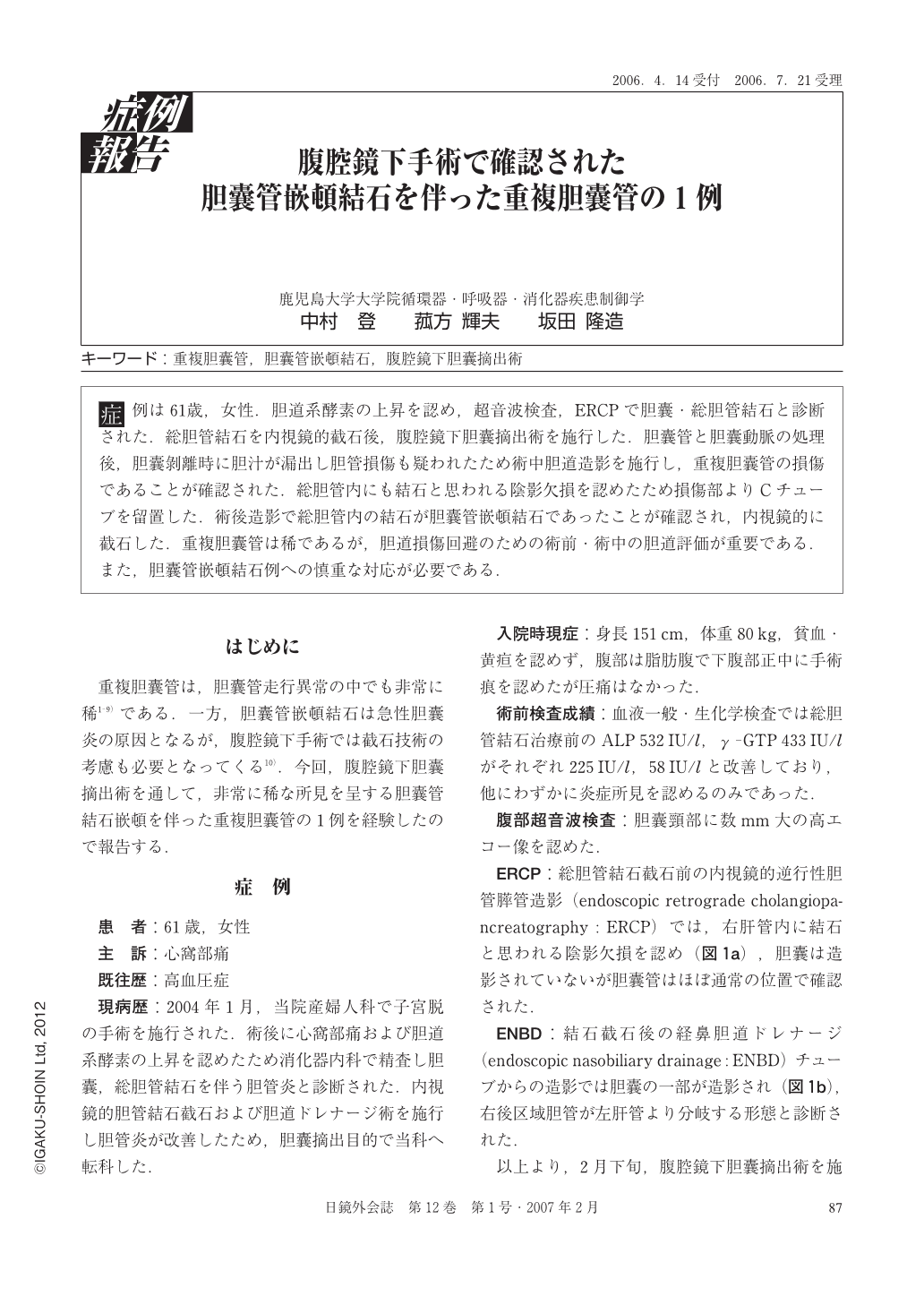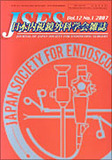Japanese
English
- 有料閲覧
- Abstract 文献概要
- 1ページ目 Look Inside
- 参考文献 Reference
症例は61歳,女性.胆道系酵素の上昇を認め,超音波検査,ERCPで胆囊・総胆管結石と診断された.総胆管結石を内視鏡的截石後,腹腔鏡下胆囊摘出術を施行した.胆囊管と胆囊動脈の処理後,胆囊剝離時に胆汁が漏出し胆管損傷も疑われたため術中胆道造影を施行し,重複胆囊管の損傷であることが確認された.総胆管内にも結石と思われる陰影欠損を認めたため損傷部よりCチューブを留置した.術後造影で総胆管内の結石が胆囊管嵌頓結石であったことが確認され,内視鏡的に截石した.重複胆囊管は稀であるが,胆道損傷回避のための術前・術中の胆道評価が重要である.また,胆囊管嵌頓結石例への慎重な対応が必要である.
A 61 year-old woman was diagnosed by an ultrasound test and ERCP as having a gallstone and choledocholithiasis. Laparoscopic cholecystectomy was performed for cholecystolithiasis after endoscopic choledocholithotomy. After treatment of the cystic duct and artery, bile leaked out while the gallbladder was being exfoliated. Since the bile duct injury was suspected, intraoperative cholangiography was performed. It revealed an injured double cystic duct and a filling defect which was considered to be a choledochal calculus. C tube was placed in the hepatic duct via the injured site. Postoperative cholangiography revealed that the calculus in the choledochus had impacted in the cystic duct. Although the double cystic duct is rare, pre and intraoperative biliary tract evaluations are important to avoid bile duct injury.
Careful management for impacted stone in the cystic duct is also required.

Copyright © 2007, JAPAN SOCIETY FOR ENDOSCOPIC SURGERY All rights reserved.


